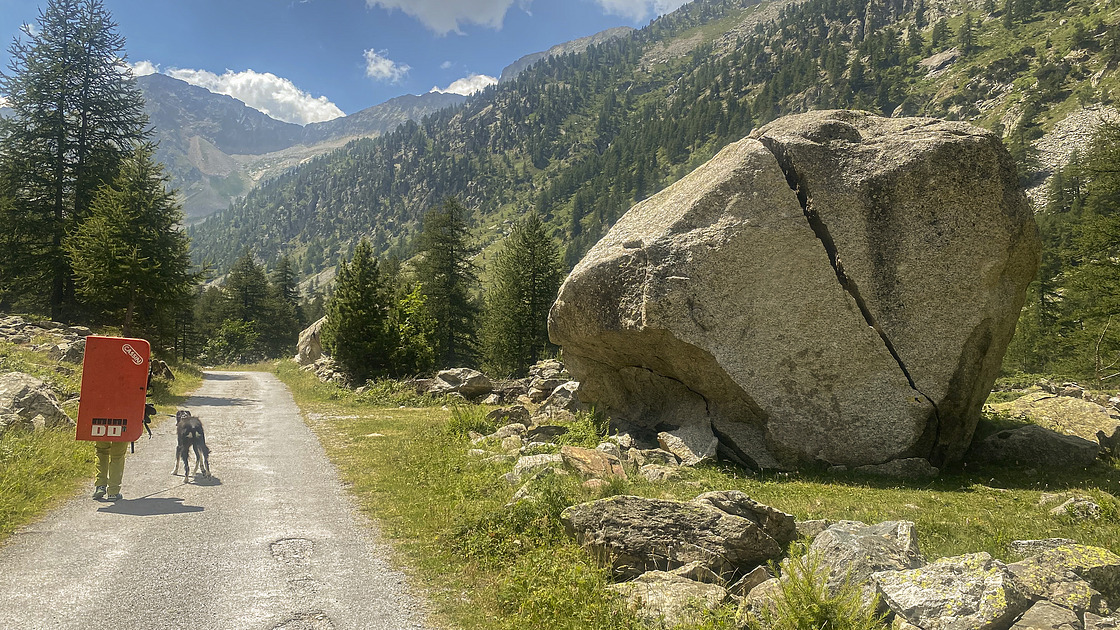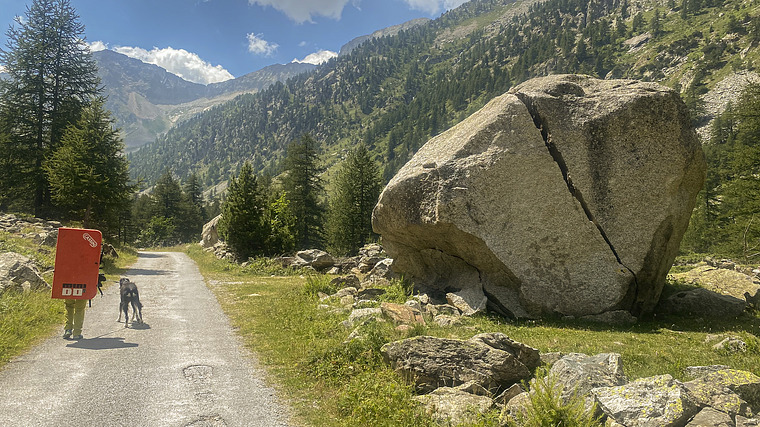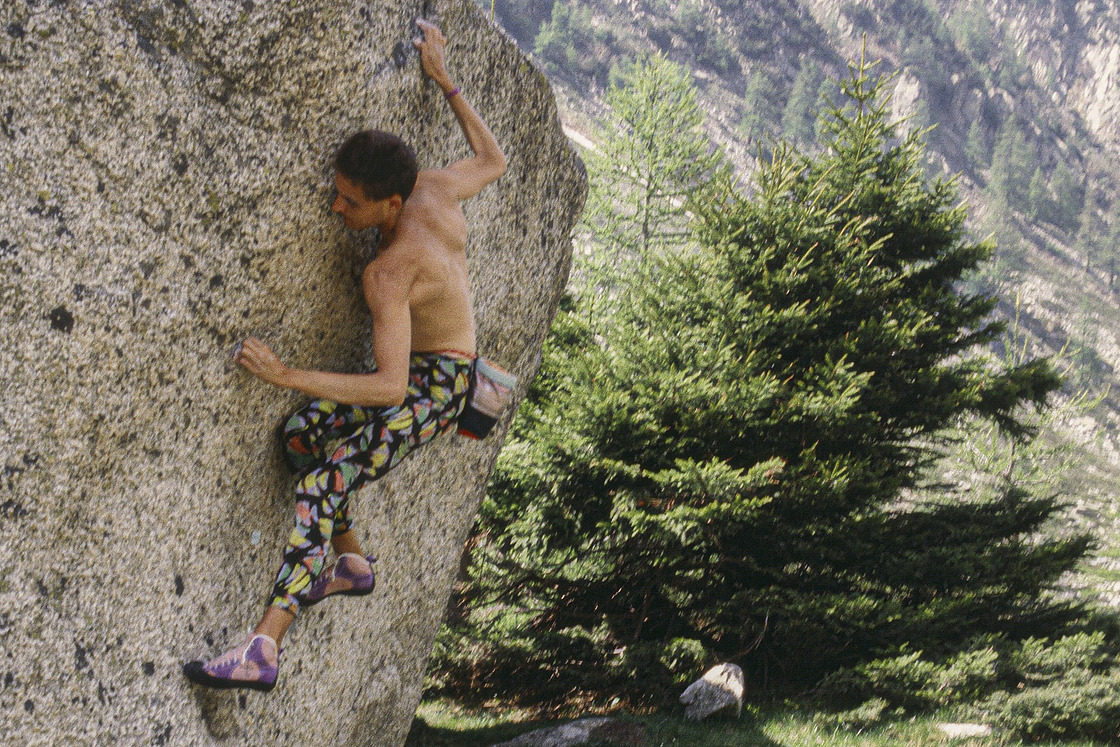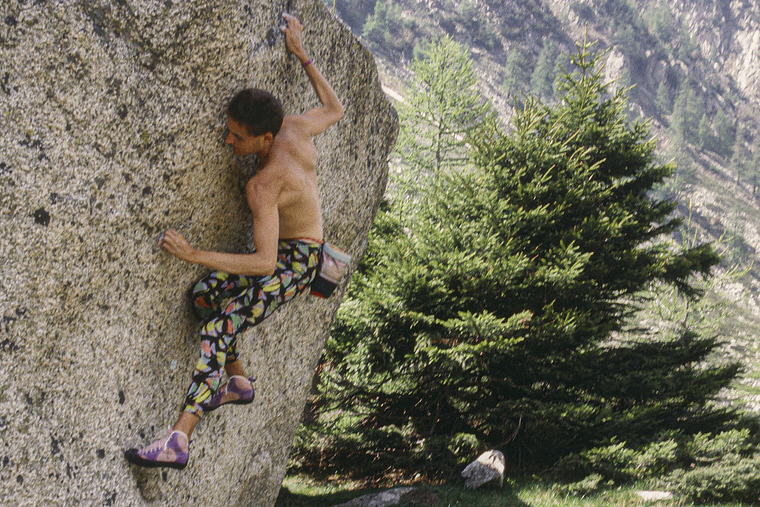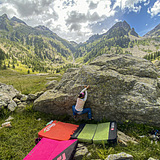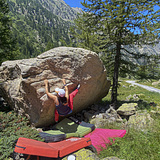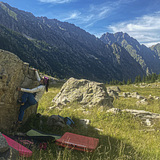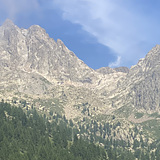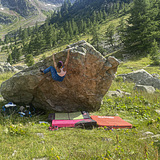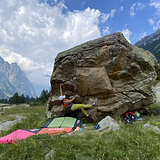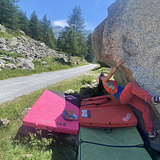🇮🇹
Siamo nelle Alpi Marittime , precisamente nel Parco dell’Argentera in Valle Gesso, in una degli ambienti più piacevoli del Piemonte cuneese, tra splendidi prati, laghi blu, simpatiche marmotte e magnifiche montagne frequentate da molti alpinisti ed escursionisti come la cima Nord e Sud dell’Argentera, il Corno Stella, Cima Asta Soprana, ecc.
I massi sono un pò sparsi nella valle, facilmente raggiungibili, ma è necessario spostarsi di qualche minuto da uno all’altro e la maggior parte si trovano lungo la strada poco dopo il Gias delle Mosche fino al fondo valle. Si arrampica su gneiss e ottimo granito in un ambiente di montagna splendido, su strutture abbastanza varie, la maggior parte su linee tecniche, con gran lavoro di dita e di piedi e qualche passaggio bello esposto.
L'area si divide in due zone: settore Basso e settore Alto, quest’ultimo ultimo nato con linee più facili.
👉Settore Basso: 14 massi (nominati con lettera B seguito dal numero blocco) tra il Gias delle Mosche (dove è consigliabile parcheggiare) e il Gias della Casa. Linee tecniche anche di grado 7. Stupenda è la “Fessura della Valle” al masso 7.
👉Settore Alto: 8 massi (nominati con lettera A seguito dal numero blocco) dopo il Gias della Casa verso il fondovalle prima del Rifugio Regina Elena.
😬Atterraggio
Solitamente buono (crash pad comunque obbligatori!).
🪨Tipo di Roccia
Gneiss, Granito
⚠️ si consiglia di controllare sempre le condizioni della roccia, appigli, ecc., vista la lunga presenza di neve in inverno
☀️Clima
Maggio-Ottobre a seconda della presenza di neve.
------------
🇺🇸
We are in the Maritime Alps, precisely in the Argentera Park in Valle Gesso, in one of the most pleasant environments of Cuneo's Piedmont, between splendid meadows and lakes, friendly marmots and magnificent mountains frequented by many mountaineers and hikers such as the North and South summit Argentera, Corno Stella, Cima Asta Soprana, etc. The boulders are scattered around the valley, easy to reach, but it is necessary to move a few minutes from one to the other and most of them are located along the road shortly after the Gias delle Mosche and the bottom of the valley. He climbs on gneiss and excellent granite in a splendid mountain environment, on quite varied structures, most of them on technical lines, with great work of fingers and toes and some beautifully exposed passages.
The area is divided into two areas: the Lower sector and the Upper sector, the latter being newer and with easier lines.
👉Sector Basso: 14 boulders (named with the letter B followed by the block number) between the Gias delle Mosche (where it is advisable to park) and the Gias della Casa. Technical lines also grade 7. The “Fessura della Valle” at boulder 7 is wonderful.
👉Sector Alto: 8 boulders (named with the letter A followed by the block number) after the Gias della Casa towards the valley floor before the Regina Elena Refuge.
😬Landing
Usually good (crash pads required anyway!).
🪨Type of Rock
Gneiss, Granite
⚠️ it is advisable to always check the conditions of the rock, holds, etc., given the long presence of snow in winter
☀️Climate
May-October depending on the presence of snow.
🇮🇹
La maggior parte deil passaggi sono ad opera di Giovanni Massari (Giovannino) che ha saputo creare un bel terreno di gioco.
Riportiamo qui sotto la storia più dettagliata estrapolata dal sito web www.cuneoclimbing.it e ultimamente rivista dallo stesso Giovanni Massari
"I blocchi granitici del pian della Casa e del gias delle Mosche, adagiati su un verde tappeto erboso e dalle forme invitanti, non possono che attrarre lo sguardo e la voglia di salire dei numerosi “climbers” che transitano sul fondovalle per i cimenti alpini nel gruppo dell’Argentera. Le leggende narrano che già durante il secondo conflitto mondiale un ‘’certo’’ Hermann Buhl, di stanza a Valdieri con le truppe hitleriane abbia tentato i primi approcci su queste strutture. Sicuramente molte altre generazioni di alpinisti-arrampicatori hanno provato con più o meno successo a salire i ‘’boulder problem’’ delle ostiche placche e degli svasati spigoli.
Ma è soltanto sul finire degli anni 70’ che la pratica del bouldering prende piede nelle nostre valli ed inizia anche qui come in altri siti del cunese la valorizzazione di questi magnifici massi granitici da parte di arrampicatori cunesi e fossanesi (Carlo Bergese, Igor Napoli, Cesare Ravaschietto ed altri) che salgono le prime linee interessanti tra cui le più meritevoli sono sicuramente : ‘’Sting’’ 6b, ’’Lolita’’ 6a+, il traverso di ‘’Ghoul’’ 6b+, alcune belle linee sulle placche e la caratteristica fessura spaccata che è il simbolo del sito.
Verso il 1984 il torinese Giuseppe Fassi in compagnia di un giovanissimo Marzio Nardi (uno dei personaggi chiave del buoldering italiano e cui si deve l’apertura di “Icaro” primo 8a italiano) segnalano sistematicamente i passaggi aperti fino a quel momento con piccoli quadrati di vernice blu creando una sorta di circuito visibile in qualche punto ancora oggi. Tra il 1985 ed il 1988 frequenta la valle un gruppo di monregalesi attratti da questa disciplina (Federico Bausone, Giovanni Massari, Fulvio Sclavo insieme ad altri occasionali arrampicatori); le linee ed i progetti prendono forma e si moltiplicano e Giovanni Massari riesce su numerosi blocchi che sono ora imperdibili classici come: ’’Hip-Hop’’ 6b+,’’Super Hip-Hop’’ 7a, ’’Sex and the city’’ 6c, ’’The wall’’ 7a, ’’Mister X’’ 7a+ ed i traversi di ‘’Compression’’ e il maestoso ‘’T.Rex’’ entrambi di 6c+. Restano però nel dimenticatoio per anni alcuni progetti non ancora maturi anche per un relativo abbandono del sito sia anche per un minor interesse generale nei confronti del bouldering e bisognerà aspettare i primi anni del nuovo millennio e l’era del ‘’crash-pad’’ e degli “spotter” (prima inesistenti entrambi) perché questi problemi vedano la luce e diventino una realtà.
Apre le danze un irriducibile del bouldering, il cunese Marco Torielli che sigla le splendide salite di ‘’King Kong’’ 7a+ (versione in piedi) e del traverso alla sua destra con uscita su ‘’King Kong’’ ovvero ‘’Super King Kong’’ 7c. Nasce poco dopo ad opera di GianFranco Tesio il passaggio forse più bello del sito ‘’King Kong sit start’’ 7b+, subito ripetuto da Giovanni Massari e da Marco Torielli. Vedono la luce poco dopo anche due vecchi progetti: ’’The Black hole’’ 7b per Giovanni Massari e GianFranco Tesio e ‘’You’’ 7a+ per Sergio Conterno, Giovanni Massari e GianFranco Tesio che vi aggiunge nel tempo una notevole partenza seduto portando il grado ad un solido 7c.
E’ di questo periodo anche l’ormai classico traverso di “Carta vetrata” 7a che nasce ad opera di Giovanni Massari.
Siamo al 2004 e serve tutto il talento del campione del mondo Chrisian Core per venire a capo dell’ultimo progetto importante ‘’Ambrosia’’ 7c+ un mix di forza e tecnica risolvibile solo con condizioni di aderenza ottimali; Core realizza inoltre il bel passaggio del non così evidente ‘’Core Corner’’ 7a+.
Dulcis in fundo Alessandro Penna realizza un progetto a lungo tentato sul muro giallo del masso di “king Kong”; nasce così “The Twins” 7c+, un altro bel test di forza per le dita. Tutto sembra ormai esaurito ma l’iniziativa e la voglia di nuovo premiano le esplorazioni del chiusano Luca Macario che da’ alla luce un nuovo settore con un bel ventaglio di passaggi fino al 7a+.
Il gioco a Pian della Casa è probabilmente esaurito ma basta alzare lo sguardo verso il rifugio Remondino per accorgersi che, poco più in alto, il gioco continua alla grande..."
-------
🇺🇸
🇮🇹
Most of the passes are by Giovanni Massari (Giovannino) who was able to create a nice playing field.
We report below the more detailed story extrapolated from the website www.cuneoclimbing.it and recently revised by Giovanni Massari himself
"The granite blocks of the Pian della Casa and the Gias delle Mosche, lying on a green turf and with inviting shapes, cannot but attract the gaze and the desire to climb the numerous" climbers "who pass on the valley floor for the alpine trials in the Argentera group. Legends narrate that already during the Second World War a '' certain '' Hermann Buhl, stationed in Valdieri with Hitler's troops, attempted the first approaches to these structures. Certainly many other generations of mountaineers-climbers have tried with more or less success to climb the `` boulder problems '' of the difficult slabs and flared edges.
But it was only at the end of the 70s that the practice of bouldering took hold in our valleys and also here as in other sites in the Cuneo area began the enhancement of these magnificent granite boulders by climbers from Cuneo and Fossano (Carlo Bergese, Igor Napoli, Cesare Ravaschietto and others) who climb the first interesting lines among which the most deserving are certainly: '' Sting '' 6b, '' Lolita '' 6a +, the traverse of '' Ghoul '' 6b +, some beautiful lines on the slabs and the characteristic split crack which is the symbol of the site.
Around 1984, the Turin-born Giuseppe Fassi in the company of a very young Marzio Nardi (one of the key figures in Italian buoldering and to whom we owe the opening of "Icaro", the first Italian 8a) systematically indicate the passages open up to that moment with small squares of blue paint creating a sort of circuit visible in some point even today. Between 1985 and 1988 a group of Monregalese people attracted to this discipline frequented the valley (Federico Bausone, Giovanni Massari, Fulvio Sclavo together with other occasional climbers); the lines and projects take shape and multiply and Giovanni Massari succeeds on numerous blocks that are now unmissable classics such as: '' Hip-Hop '' 6b +, '' Super Hip-Hop '' 7a, '' Sex and the city ' '6c,' 'The wall' '7a,' 'Mister X' '7a + and the traverses of' 'Compression' 'and the majestic' 'T. Rex' 'both of 6c +. However, some projects not yet mature remain in oblivion for years also due to a relative abandonment of the site and also due to a lesser general interest in bouldering and we will have to wait for the first years of the new millennium and the era of the `` crash-pad '' and "spotters" (both previously non-existent) so that these problems see the light and become a reality.
The dances are opened by an irreducible bouldering man, Marco Torielli from Cuneo who signs the splendid ascents of '' King Kong '' 7a + (standing version) and of the traverse to his right with exit on '' King Kong '' or '' Super King Kong '' 7c. Shortly afterwards, by GianFranco Tesio, perhaps the most beautiful passage of the '' King Kong sit start '' 7b + site, immediately repeated by Giovanni Massari and Marco Torielli. Shortly thereafter, two old projects also saw the light: '' The Black hole '' 7b for Giovanni Massari and GianFranco Tesio and '' You '' 7a + for Sergio Conterno, Giovanni Massari and GianFranco Tesio who added a remarkable seated start over time the grade to a solid 7c.
The now classic traverse of "sandpaper" 7a, created by Giovanni Massari, is also from this period.
We are in 2004 and it takes all the talent of the world champion C. Core to get to grips with the last important project '' Ambrosia'7c + a mix of strength and technique that can only be solved with optimal grip conditions; Core also makes the beautiful passage of the not so obvious '' Core Corner '' 7a +.
Last but not least Alessandro Penna realizes a long attempted project on the yellow wall of the “king Kong” boulder; thus was born “The Twins” 7c +, another good test of strength for the fingers. Everything seems to have run out by now but the initiative and the desire again reward the explorations of Luca Macario from Chiusi, who gives birth to a new sector with a good range of passages up to 7a +.
The game at Pian della Casa is probably over but it is enough to look up towards the Remondino refuge to realize that, a little further up, the game continues in a great way ... "
